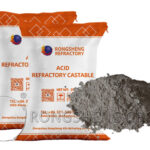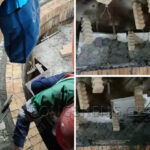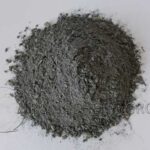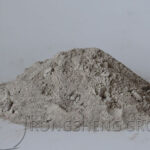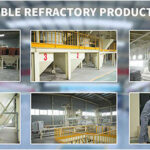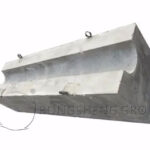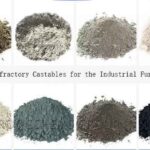Silicon carbide castables are often used in boiler linings or linings of iron trenches in front of blast furnaces. High-strength wear-resistant castables are used in boiler linings. It is also used in the unloading part of the rotary kiln and the use effect is very good, here, it is called anti-crushing castable in this part.
Conditions for Use of Silicon Carbide Wear-Resistant Castables
Silicon carbide castables can be used under high temperatures and harsh conditions. Silicon carbide castables have particularly good wear resistance. As long as it is used in the right location, its service life will be increased by more than 50% compared with ordinary low-cement castables.
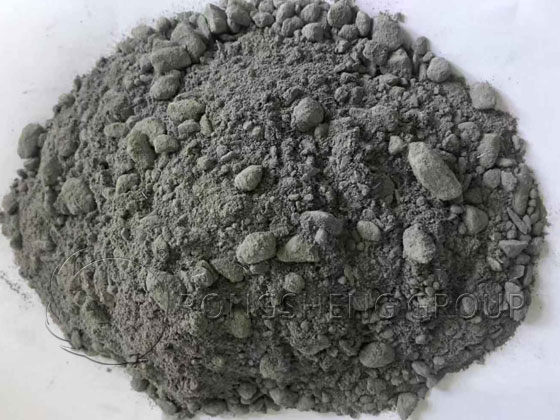
What is the Suitable Working Temperature for Silicon Carbide Castables?
Silicon carbide castables are suitable for use in furnace linings under reducing atmospheres, and are more effective when used at temperatures above 1500°C.
Silicon carbide castable is a composite refractory castable. A certain proportion of silicon carbide, alumina powder, corundum or high-content bauxite raw materials is added to the inner matrix. The bonding agent is composed of pure calcium aluminate cement and some other chemical ingredients.
The use temperature of silicon carbide in reducing atmosphere is as high as 2454°C. If used in an oxidizing atmosphere, oxidation reactions may easily occur. If used in an oxidizing atmosphere, silicon carbide cannot produce a protective film on the surface. If the oxidation pressure is high, the surface layer will crack or peel due to temperature changes and mechanical impact.
If the oxygen partial pressure is low, the protective layer cannot be formed and will diffuse in the pores, resulting in a reduction in the quality of silicon carbide castables.
Castable manufacturers will add a certain proportion of binder to the composite process ratio to adjust the oxidation reaction. Under normal circumstances, metallic silicon is used to regulate the oxidation reaction. It is also useful to use sodium salt solution or sol to penetrate into the open pores of the material to inhibit oxidation and increase the service life.
Therefore, silicon carbide castables are not suitable for use at low temperatures, especially in oxidizing atmospheres. When used in a reducing atmosphere, the higher the temperature, the better the effect.
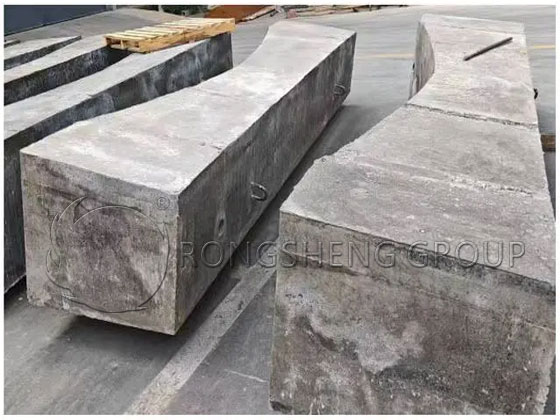
Application of Wear-Resistant Castables and Refractory Precast Shapes in Sleeve Kiln Arch Blocks
In the arch bridge part of the sleeve kiln, both wear-resistant castables and refractory Precast Shapes can meet the requirements. Prefabricated parts have a long cycle but good results, and the construction of wear-resistant castables is complicated but has strong adaptability. Enterprises can make reasonable choices based on actual working conditions.
The arch bridge of sleeve lime kiln has always been a difficult problem to overcome. Because this part needs to be load-bearing, wear-resistant, and wind-resistant, the required refractory materials are difficult to determine with just one material.
In this case, many manufacturers use a dual method of laying refractory bricks first and then making refractory castables to increase the service life of the arch bridge. Another reason is that there are many types of refractory bricks used in this part, their weight is small, production is inconvenient, and the production cycle is long. In this case, Refractory Precast Shapes were used to meet the requirements of this part.
According to the current feedback from manufacturers, the service life of refractory prefabricated parts used in arch bridges is quite good, usually more than 3 years, while the use of magnesia bricks is only about one year. Using a mixture of refractory bricks and castables, the service life is probably more than one year.
However, the use of refractory Precast Shapes requires large molds, and the production cycle must be at least 20 days. During construction, a crane can be used to place them at the location of use. As the temperature of the kiln body rises, the refractory Precast Shapes are also baked, which can be said to be the best of both worlds. However, the model is large and the price will be higher than using wear-resistant castables.
If the production cycle of refractory prefabricated parts will be limited in the case of emergency repair, wear-resistant castables should be used. However, due to the large area and thickness of wear-resistant castables, the anchors must be changed into cage shapes according to the specifications of the parts used. Weld the cage-like anchoring material at the arch bridge part and then find high wear-resistant castables, which can also meet the use needs of this part.
In short, prefired Precast Shapes or wear-resistant castables are used for the arch bridge of the sleeve kiln, both of which can meet the usage requirements. Enterprises can decide based on actual construction time and other advantageous conditions.

